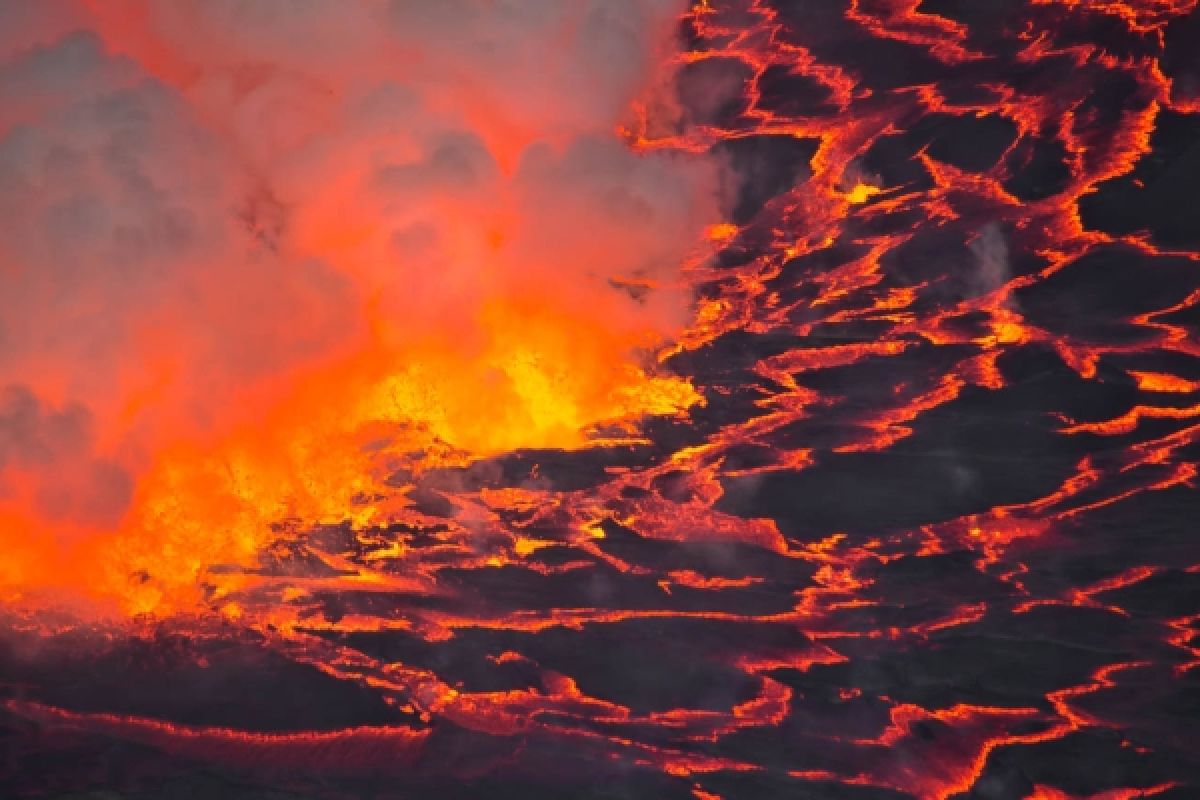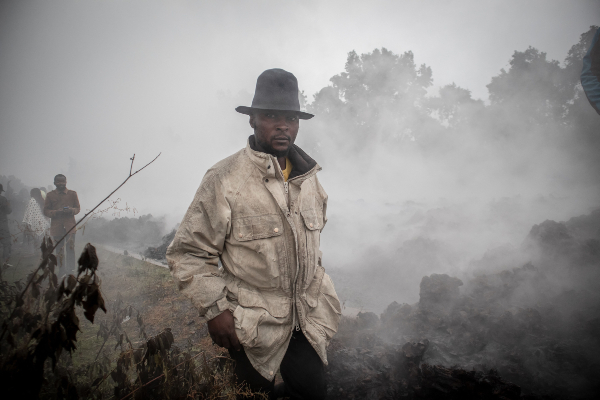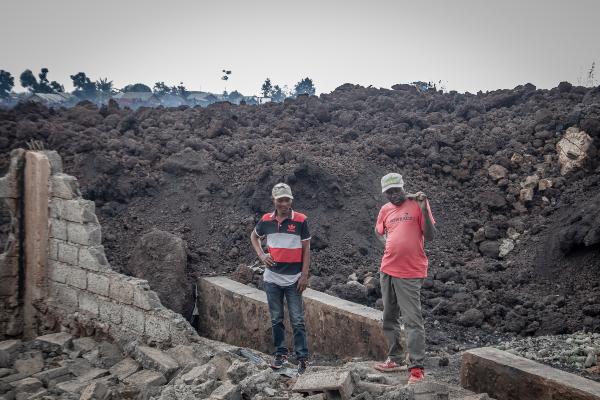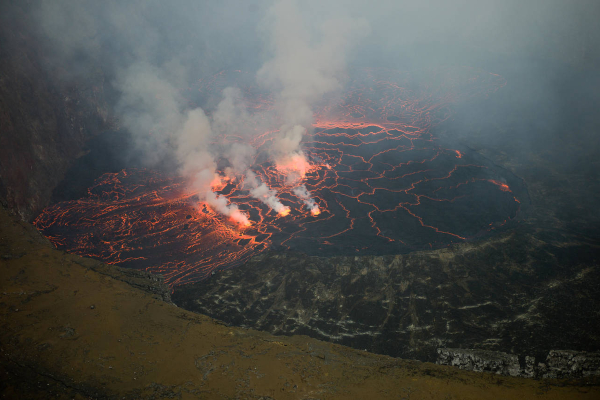Following the deadly eruption of Mount Nyiragongo in late May, volcanologist Kevin Njau asks whether the DRC could have done more to prevent loss of life.
Warnings over DRC volcano eruption

On the early evening of May 22, 2021, residents of Goma in the eastern Democratic Republic of Congo (DRC) were again engulfed in the dark but fiery nostalgic memories of 2002 and 1977. One of the most dangerous stratovolcanoes in the world had begun spewing red-hot lava with no remorse.
This was nature at work, but with it came affliction and misery to the two million residents living in Mount Nyiragongo’s shadow.
Christened locally as the ‘Mountain of Fire’, the volcano rises 3,470m (11,385 ft) above the western arm of the East African Rift Valley.
This arm, also known as the Albertine Rift, is geologically younger than the eastern branch and suffers more pronounced volcanic activities as a result. What many do not know is that May’s 14-hour eruption was the 20th major eruptive incident recorded at Mount Nyiragongo since 1884.
At least 31 people died during the most recent flare-up.
By the time the lava had stopped its slow advance through the outskirts of Goma, more than 5,000 people had been displaced and 3,000 homes destroyed. Major powerline and road infrastructures had also been destroyed, and the city is now suffering cholera outbreaks and other medical crises due to the disruptions it caused to the water supply.

Above: Men cross in front of the still smoking lava rocks from an eruption of the Mount Nyiragongo in May
It could have been much worse. Two thousand people died when Mount Nyiragongo erupted in 1977, and 250 lost their lives during the last major eruption, in 2002.
With an estimated population north of 670,000 in the Goma metro area alone, its location, just 12 miles (19km) from one of the most dangerous volcanic centres on the planet, provides disaster management agencies with a major headache.
Volcanic eruptions create life. It is thanks to their rich soil deposits that agriculture thrives in the eastern DRC. Mount Nyiragongo was also a major source of much-needed tourist dollars in the region before the Covid-19 lockdowns, with foreign visitors ignoring international warnings against travel to the region to see its fiery lava lake.
But volcanoes also bring death. Laypeople could be forgiven to think that a volcanic eruption can be predicted by the minute. In reality, this is not really possible.
Eruptions can take all manner of forms. Their common denominator, though, is pressure release via fractures and faults in crustal rocks, which then causes the rapid, upward movement of molten magma from the depths of the earth to the surface. A favourite analogy is the effect seen when a vigorously shaken bottle of carbonated soda is suddenly uncorked.
Following the catastrophic 2002 eruption, models constructed by some of the world’s most brilliant volcanologists had predicted the next major eruption would take place between 2024 and 2027.
Despite the handicap of forecasting an eruption, there are usually clues something might be about to occur, thus giving authorities time to act.
At Mount Nyiragongo, there were seismic activities days before the eruption hinting at magma movements beneath the volcano. However, crucial data could not be collected in time by the underfunded and under-staffed Goma Volcano Observatory (GVO) to warn locals.
This proved fatal for Goma.

Above: People salvage for their belongings in the aftermath of the eruption of Congo's Nyiragongo volcano on May 24, 2021.
Consummate data collection and timely decision-making is key to minimising loss of life from volcanic eruptions. In other eruption-prone areas of the world, such as Mount Merapi in Indonesia and La Soufrière on the Caribbean island of Saint Vincent, such preventative measures have been mastered to great effect.
In the DRC, it has emerged the GVO, the agency tasked with providing this crucial early-warning, had been starved of funding.
Workers at the organisation penned a letter to President Felix Tshisekedi citing delayed salaries, mistreatment of employees and funding embezzlement as the cause for May’s high death toll. They added: ‘The eruption would have been predicted were it not for all the problems.’
More damning reports indicate that the observatory had in fact not been monitoring the volcano for months prior to the eruption. This was largely driven by the World Bank cancelling grants to the GVO because of alleged corruption malpractices.
A number of other factors has further made it difficult to monitor activities at the volcano, thus leading to a poor disaster-response plan. Theft and vandalism of important observation equipment have been going on for years.
The presence of insurgents from the M23 rebel group have also curtailed monitoring. It has also been reported that several seismometers have been damaged by lighting over a period of time.
But while civilians are, in the main, able to flee volcanic eruptions like those seen in May, the same cannot be said if the region were to experience a so-called ‘limnic eruption’ or ‘lake overturn’, as witnessed in Cameroon in 1986.
An estimated 1,800 people died in Cameroon after volcanic activity beneath Lake Nyos caused dissolved CO2 gas to be released deep beneath the water, suffocating everything in its path.
Ominously, Goma sits on one of Congo’s largest and most geologically active lakes, Lake Kivu. It is thought there could be as much as 200km3 of carbon dioxide in the lake, which is connected to Mount Nyiragongo through fissure systems.
These fissures channel magmatic volatiles, including gas, into its waters.
It will only take a geologic, mechanical or environmental trigger for an ‘overturn’ to occur, unleashing volumes of lethal, invisible carbon dioxide upon Goma and the other towns and villages that line Lake Kivu.
But while the city may be sitting on a potential timebomb, the government is not resting on its laurels as far as an overturn is concerned. In a communique from President Tshisekedi, the Minister of Hydrocarbons is instructed to ‘do everything possible to clear the gas from Lake Kivu and the Gulf of Kabuno’.
Mount Nyiragongo’s eruption may have been a disaster in waiting, thanks to the litany of challenges facing the GVO. But it shed light on the significance of monitoring, mitigating and managing volcanic-related disasters.
Volcanologists visit dangerous locations all over the world to collect data and synthesize information, which has in the last decades contributed astounding findings in understanding volcanoes better.

Above: Mount Nyiragongo ejecting lava.
More funding and research have also gone into monitoring to avert crises such as have happened at Mount Nyiragongo.
The May 2021 Nyiragongo experience brought with it some lessons that remind us that there is more to be done.
The various administrations need to invest significantly in human capital (scientific personnel and support staff), up-to-date equipment, like seismic stations, GPS units, gas sensors and cameras, and disaster management programmes that will complement findings on the ground.
In the aftermath of the eruption, thousands of residents who deserted Goma in panic are now returning home.
Fears of another eruption still linger over the city’s desolate air, and after-shocks and tremors continue intermittently, as they have done for centuries. If well managed through time and conscious effort, the ‘Mountain of Fire’ will cease being viewed as an existential threat.



